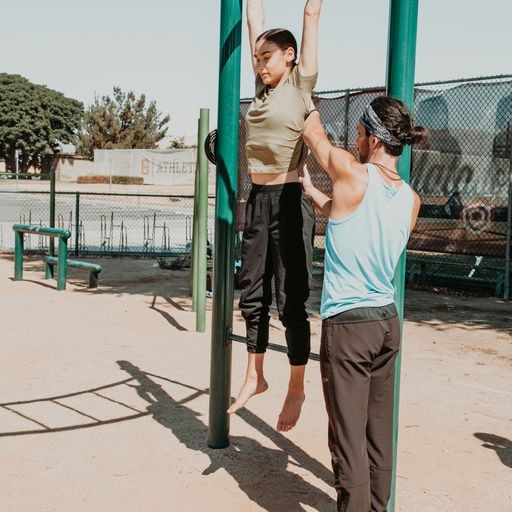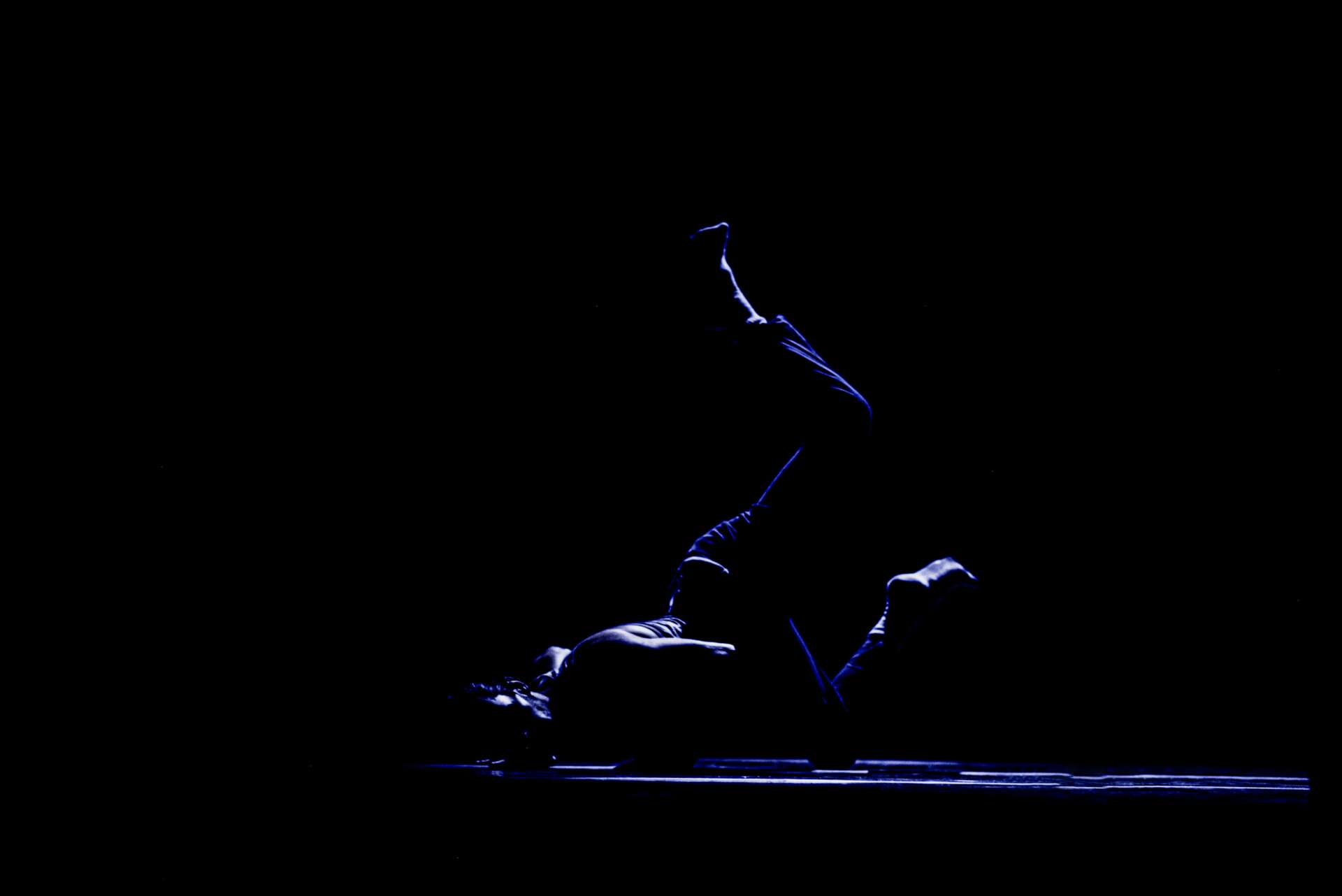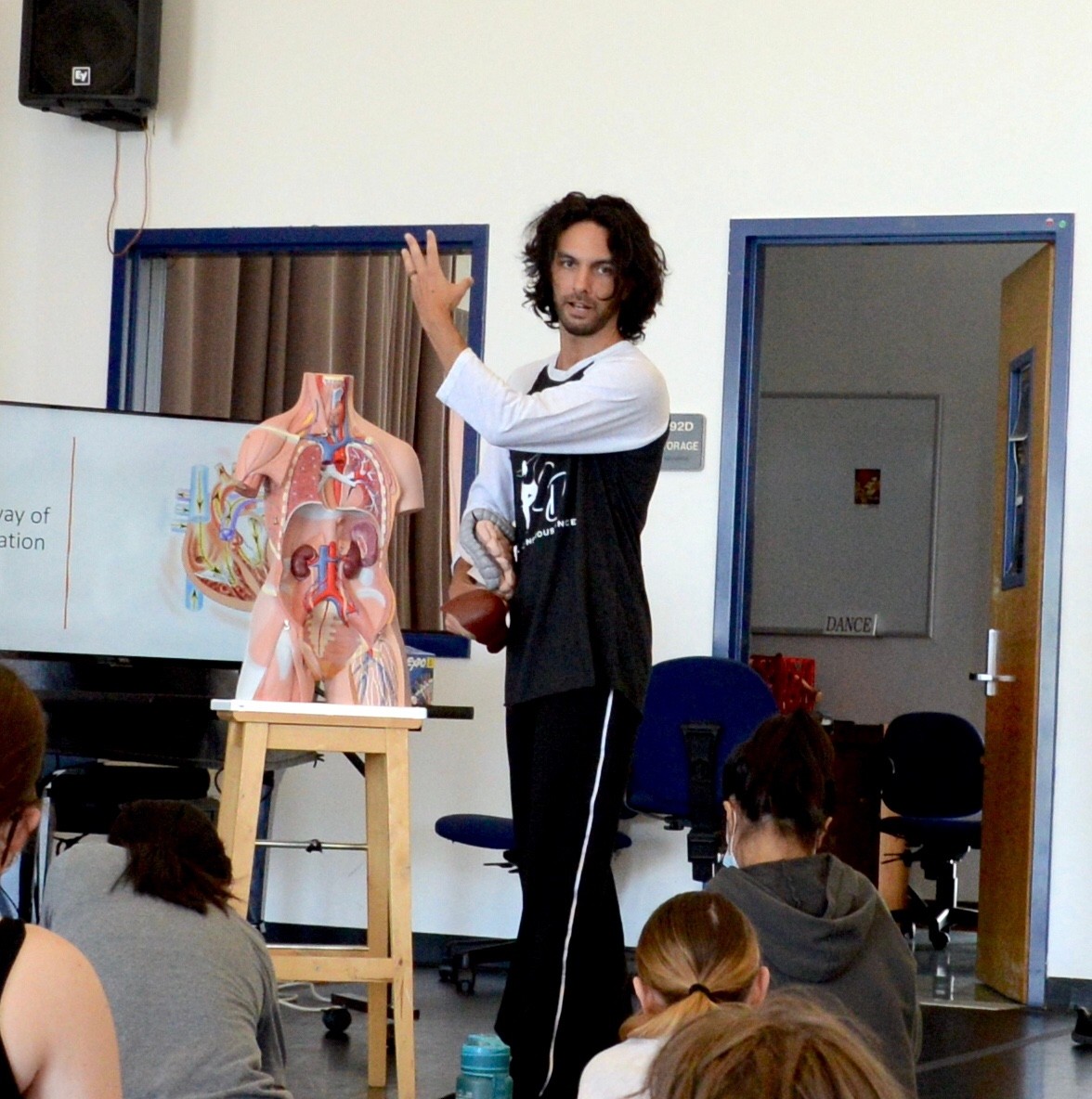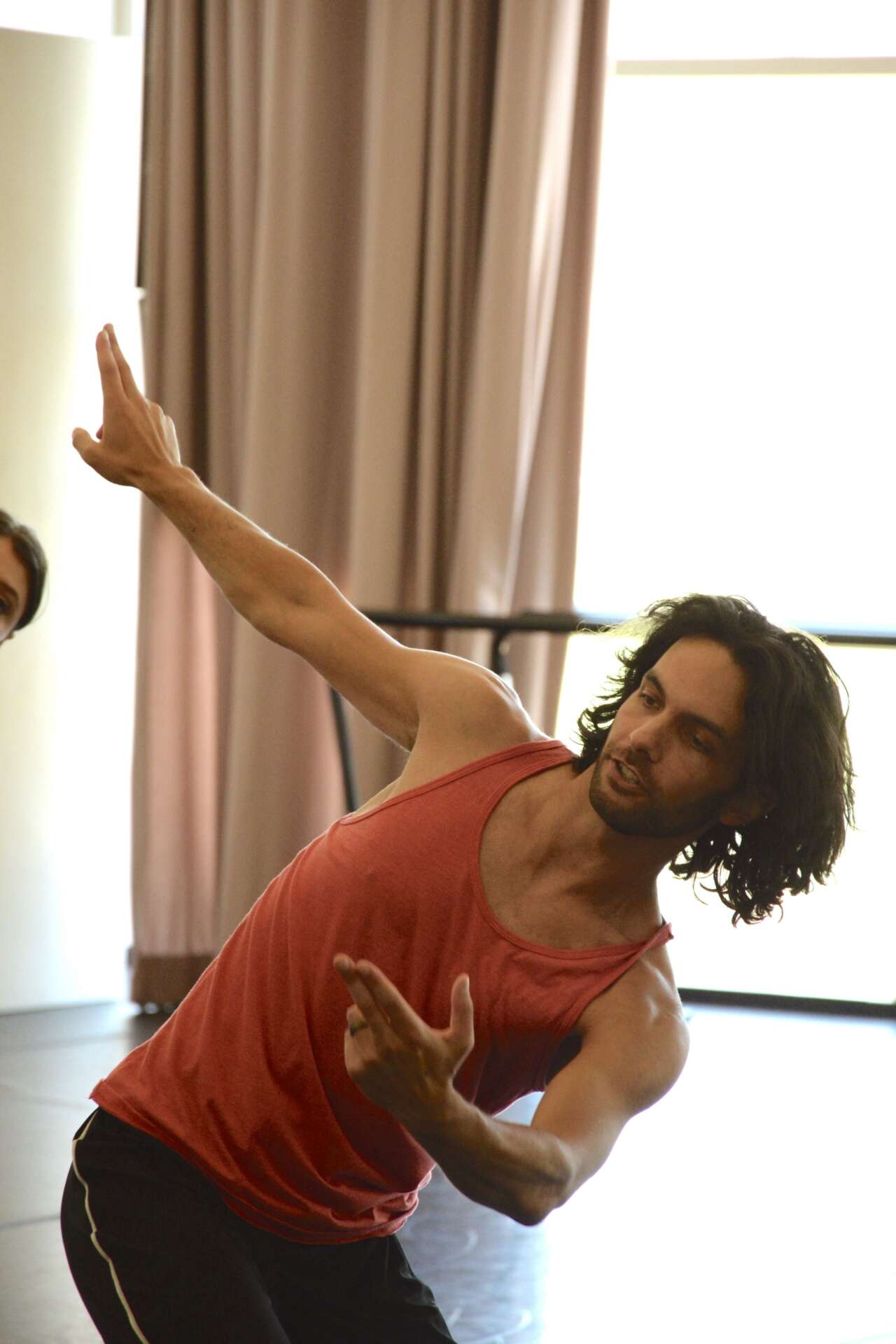We caught up with the brilliant and insightful Evan Rosenblatt a few weeks ago and have shared our conversation below.
Alright, Evan thanks for taking the time to share your stories and insights with us today. Can you open up about a risk you’ve taken – what it was like taking that risk, why you took the risk and how it turned out?
At 25, I had my master’s degree and had been steadily teaching and dancing professionally while staging my own creative work. It seemed like life was good, but deep down there was a sense of dissatisfaction.
While dancing in a company, I was experiencing debilitating hip and back pain. With an advanced degree in kinesiology, too many certifications to name, years working in a PT clinic, and lots of medical resources, it didn’t seem logical that the pain remained a mystery. As conventional practices failed one by one, I was losing hope. Enter the first risk in the shape of a choice – to continue forcing the path I clung to, dancing through the warning signs of increasing pain or question the very path itself. After a lot of anguish, I set foot to the latter.
As I committed to an unfamiliar road, opportunities randomly emerged – less conventional movement philosophies found their way into my YouTube feed, lesser publicized therapies came recommended, books that had been collecting dust in my library offered timely support. There is a relevant cliché that states, “when the student is ready the teacher appears.” During this period, I met countless figures who became mentors, with backgrounds as varied as the parts of the world they hailed from. No one, however, was more impactful than someone in my very own backyard – my wife, Bethana.
An eminent dancer and educator herself, Bethana has the unique gift of selfless nurture. This is evident in her attention to detail in her teaching style, parenting, and performing. Bethana’s coaching, became an antidote to the competitive environments that had fueled my ambition, and ultimately stuckness. She graciously devoted countless hours in the studio, at home, even on vacation, helping me to reexamine every aspect of my movement, from the pedestrian to the technical. This ultimately became an expanded back-and-forth partnership, an outgrowth of the many years we had already been working together as dancers. It was infused with the experiences I was receiving from other mentors as well as our collective education. That process, which in concentrated form, spanned several years, broke down a lot of unhealthy habits and rebuilt me from the ground up. It was a process of total self-discovery where all previous education and beliefs were up for questioning, and felt sense became the true litmus test for truth.
After a couple of years, the pain seemed but a distant memory, and I was a very different person. I was ready to re-engage the dance dreams I had accepted leaving behind, with a far different frame of view. It was time to take the second risk: to put myself out there as an artist, open where I was previously guarded.


Awesome – so before we get into the rest of our questions, can you briefly introduce yourself to our readers.
I am a dance artist, an educator, and a wellness strategist. While my work crosses several fields, my private practice “The Conscious Dancer,” is a synthesis of my experience in all of them. I did my formal education (both B.S. and M.S.) in kinesiology. I studied biomechanics, anatomy, physiology, sport psychology, and motor behavior. Simultaneously, I majored in dance (performance and choreography). I’ve spent the past fifteen years teaching in higher ed. dance and kinesiology programs while simultaneously performing, creating, and sharing my practice.
The Conscious Dancer is a multifaceted, physical practice that applies the rigor of science and the intelligence of nature to facilitate total well-being. It challenges the notion that health is a necessary sacrifice for productivity and implements diverse strategies to optimize human function and creativity. While at its core, TCD caters to dancers, it is not exclusively for them. Serving a wide-ranging audience through classes, workshops, and private training, the work varies depending on the population.
When working privately, I see a lot of people with chronic pain or recent injury. Many of these folks have grown frustrated with the lack of results from medical intervention. Others arrive wanting to improve their physical performance and movement skills. Regardless of the reason somebody comes through the door, at its core, each person is seeking to improve the quality of their life – to become more whole. My role is to help them open doors where they appear shut. My approach is through holistic education. I share it in the form of hands-on tactile work, movement coaching, nervous system regulation, experiential anatomy, mental training, and lifestyle coaching. The journey I take with anyone begins with a highly involved assessment, taking stock of where they are and what they are bringing, before setting foot to a path towards where they’d like to go.
The dance field specifically, is like a piece of Swiss cheese when it comes to wellness. That is to say – there are a lot of holes. Some of that has been inherited as “tradition.” Simultaneously however, there is now more awareness than ever of the need for sustainable ways of practicing. Because of the specialized and intense focus in dance training, the holistic education of the body gets sacrificed at the hands of creative and technical growth. As a result, dancers forego function for form, and wellness for acceptance. The net result: a field that boasts an 80% injury rate not including the psychological distress. TCD bridges the gaps in dance training, offering education that promotes physical embodiment as a gateway for technical and creative growth.
We do this through an array of classes and workshops. This summer, Bethana and I offered our second annual week-long, Conscious Dancer Summit, a concentrated experience for dancers with curriculum rooted in technique (ballet, contemporary, partnering) improvisation, anatomy, somatics, creative process, nutrition, nature immersion, and holistic lifestyle practices. TCD is also woven into the courses we teach in universities, as well as workshops we give that accompany our performances.


What’s a lesson you had to unlearn and what’s the backstory?
I had to unlearn the belief that energy is infinite with endless reserves. My twenties were a time of actualization, trying to figure out who I was, and what was important to me. It meant saying yes to any opportunity that came my way. If it could technically fit my schedule, I’d make it work. What I wasn’t great at, was saying no – implementing the necessary boundaries to protect my energy. With a competitive sports background prior to dance, pushing hard became synonymous with success, a sentiment echoed throughout society at large. As I alluded to earlier, I was running on fumes and my body was sending all kinds of warnings,
Part of my journey included time with several mentors in Traditional Chinese Medicine, an ancient system of over 2,000 years. TCM is built on a philosophy of balancing energy to maintain total well-being. Instead of prescription pharmaceuticals and invasive treatments, it uses natural supplementation and other forms of therapy to maintain a healthy, balanced life. My immersion in the philosophy behind TCM was as healing as any of the modalities within it. Those experiences have influenced how I navigate life and they are central to the philosophy of The Conscious Dancer. In TCD, for instance, there are many different zero-tech biological markers we teach to assess energy levels. We show people how to use these markers to read their needs on any given day – to maximize benefits while minimizing risk of injury or illness.


Is there mission driving your creative journey?
What drives me personally is self-discovery. All my work aims to support that for others as well. I’ve taught a lot of dance technique classes such as a Modern, Ballet, and Contemporary Dance. Early on, I would mostly teach the codified form according to its tradition. I still see value in that. There was a turning point however, where I started teaching my practice through the form and students responded. I recognized that was the path to push. It’s important for me to stay active in my own practice, to continue learning and putting myself in experiences that keep me evolving.


Contact Info:
- Instagram: @evan.rosenblatt. @theconscious_dancer
Image Credits
Emma Rosenblatt Marcus Moreno Lindsay Morrison


